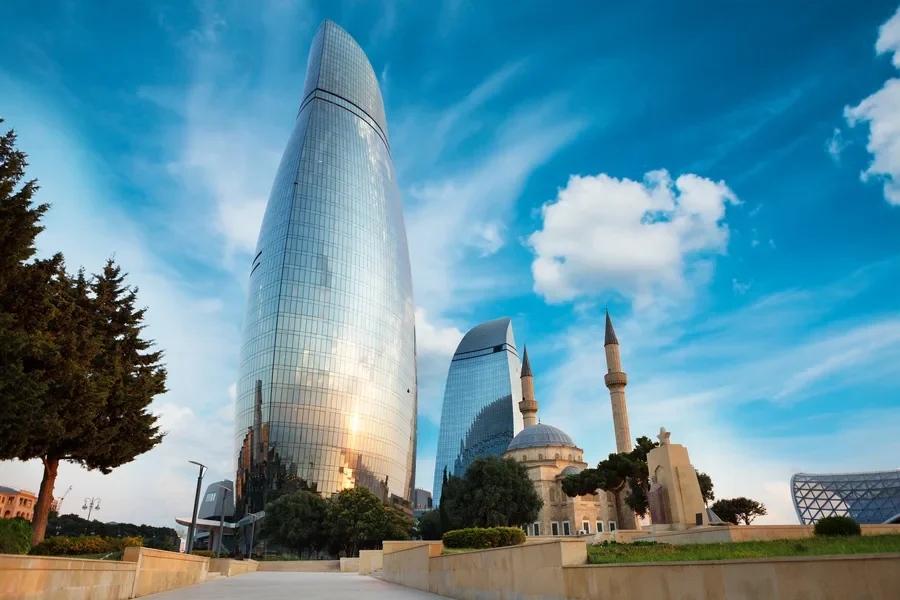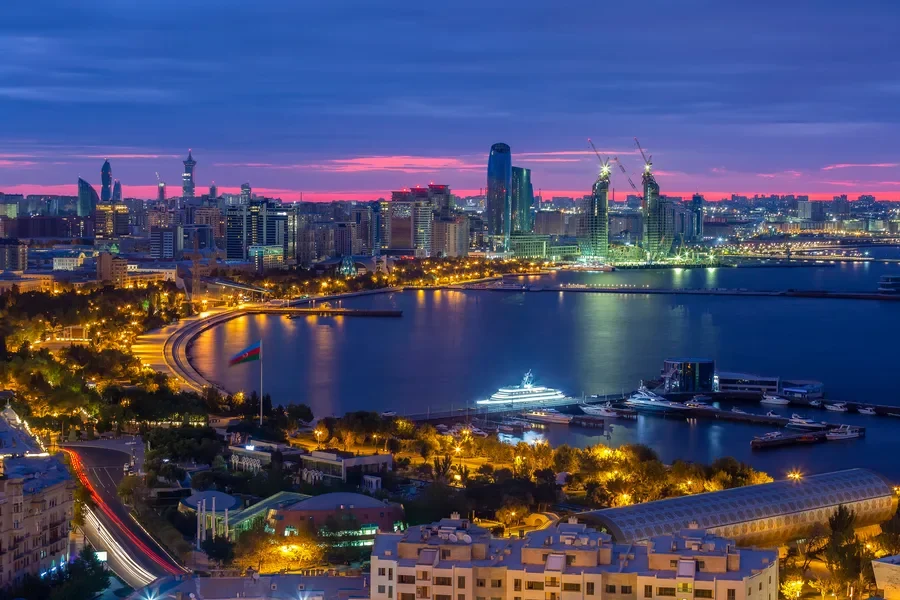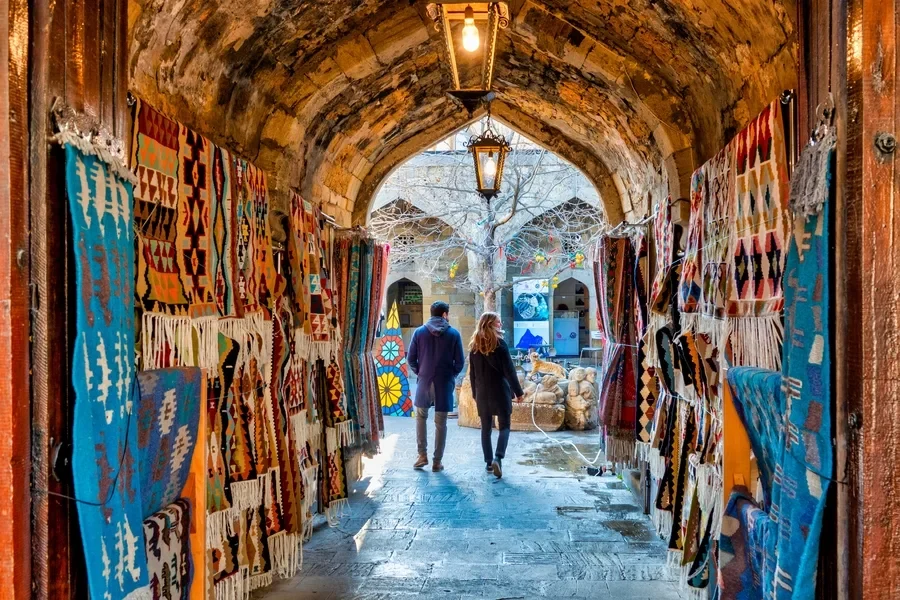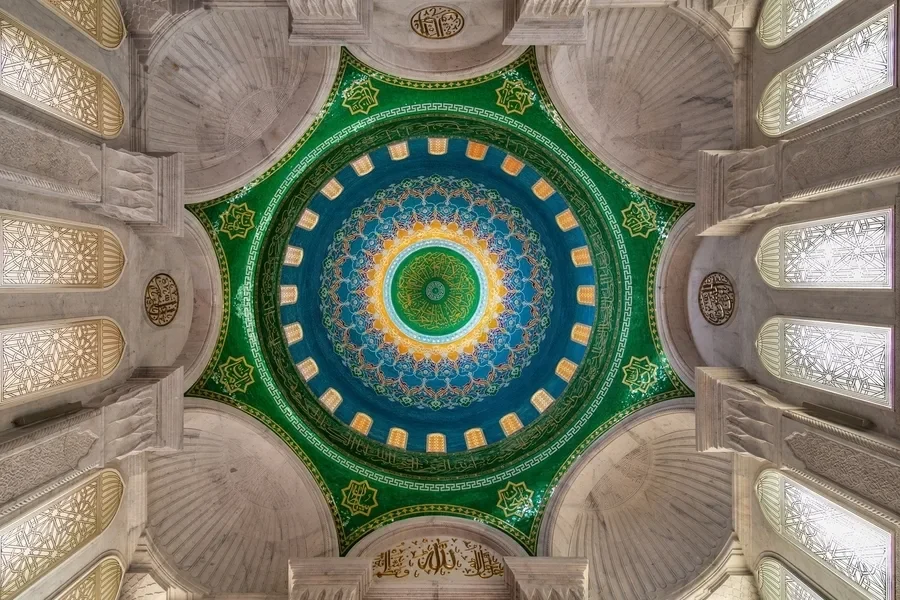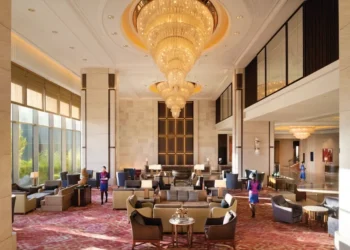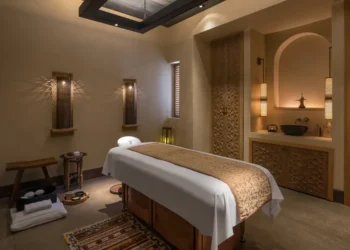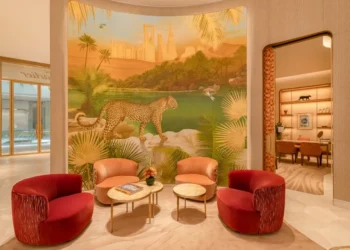At the historic core of Baku lies Icherisheher, a UNESCO World Heritage Site since 2000. Encircled by its original 12th century defensive walls, this ancient enclave hosts a vivid tapestry of civilizations from Zoroastrian and Persian to Ottoman and Russian, revealed through its architecture and urban layout. Its maze of narrow alleys weaves together traditional residences, mosques, galleries, and cultural institutions, serving as a living testament to the city’s layered history.
Part of the Old City’s heritage, the Baku Fortress Wall was constructed in 1138–1139 under Shirvanshah Manuchohr III, and later expanded in the early 17th century. Though much of it was dismantled in the 19th century, fragments remain, reminding us of its former role in defending Baku for centuries.
Emerging from the Old City skyline, the Maiden Tower stands as one of Baku’s most enigmatic symbols. Its lower foundations are dated to the 7th–6th centuries BC, with the upper structure attributed to the 12th century. Rising eight stories tall and nearly 30 meters high, the tower’s thick walls and cylindrical form hint at its potential use, perhaps as a temple, observatory, or fortification. This monument, along with the Old City and the Palace of the Shirvanshahs, earned UNESCO World Heritage designation, reflecting its cultural significance.
Located on Baku’s outskirts, the Bibi-Heybat Mosque is a modern reconstruction of a 13th century mosque commissioned during the era of the Shirvanshahs. The original was destroyed in 1936 under Soviet rule, but it has since been rebuilt on the same site to honor Ukeyma Khanum, a descendant of the Prophet Muhammad and a revered female figure in Shia Islam.
A striking contrast to Baku’s historic core, the Heydar Aliyev Center represents the city’s leap toward contemporary cultural expression. Designed by Zaha Hadid and completed in 2012, its fluid, curvilinear form rejects sharp angles, a metaphor for modern Azerbaijan’s forward momentum. It houses a museum, library, auditorium, and exhibition spaces, all enfolded in a seamless architectural shell. In 2014, it earned the prestigious Design of the Year Award from the London Design Museum.
While the city’s tapestry is woven from countless cultural threads, Azerbaijani carpets stand out as a living tradition. Recognized by UNESCO as an Intangible Cultural Heritage since 2010, carpet weaving remains a deeply rooted, multi-generational craft. In Icherisheher and across Baku, carpet markets thrive with artisans displaying vibrant patterns. These are not just souvenirs but expressions of regional identity, passed down through generations.
Baku is a city of contrasts, where ancient stones and legends converge with cutting-edge design and cultural revival. From pilgrims and merchants in a cobbled fortress to avant-garde cultural spaces, each landmark tells a story of continuity, resilience, and aspiration.




























